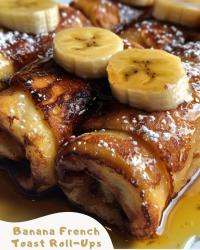Copy Link
Add to Bookmark
Report
HOMEBREW Digest #2229

This file received at Hops.Stanford.EDU 1996/10/14 PDT
Homebrew Digest Monday, 14 October 1996 Number 2229
FORUM ON BEER, HOMEBREWING, AND RELATED ISSUES
Mike Donald, Digest Janitor-in-training
Thanks to Rob Gardner for making the digest happen!
Contents:
Re: extreme beers (Charles Capwell)
Re: Calcium (Joe Rolfe)
Re: Problem looping yeast? (Joe Rolfe)
hops rhizomes (Annetmark@aol.com)
Great First Time Batch (David Sprague)
IPA favorite (Bill Watt)
SS tanks ((Jeff Sturman))
CaCO3 ("Robert Waddell")
Errors-To: bacchus@aob.org (bob rogers)
Light Skunk Recap and Thanks (jander)
Re: Apples and Ale ("Patrick Dominick")
Wild Hops Recap (jander)
Water coolers (BJHAINES@aol.com)
Interesting anecdote (was Re: IPAs) (Charles Capwell)
Wyeast Page? (Charles Capwell)
Re: Beer body, Calcium in a brew ("David R. Burley")
IPA's (Kathy Booth )
Brewing Software (korz@xnet.com)
protecting the neophytes/Ancient Grains (Michael Gerholdt)
Brew Pubs (mike and janet brandt)
Dateline NBC piece (MrMike656@aol.com)
Chicha ("PETER NOVOTA")
pH and Rheinheitsgebot ("Braam Greyling")
Stuck sparge ("Braam Greyling")
RE: Redhook & A-B / Chocolate in beer / Truth in labeling ((George De Piro))
Pilsner Irquell (Michael Caprara)
The Blue Moon Mystery is Solved! (Michael Caprara)
Tea in Beer (Michael Caprara)
For SUBMISSIONS to be published, send mail to:
homebrew@aob.org
For (UN)SUBSCRIBE requests, send mail to:
homebrew-digest-request@aob.org
and include ONLY subscribe or unsubscribe in the BODY of the message.
Please note that if subscribed via BEER-L, you must unsubscribe by sending
a one line e-mail to listserv@ua1vm.ua.edu that says: UNSUB BEER-L
If your address is changing, please unsubscribe from the old address and
then subscribe from the new address.
If your account is being deleted, please be courteous and unsubscribe first.
For technical problems send e-mail to the Digest Janitor,
homebrew-digest-owner@aob.org.
OTHER HOMEBREW INFORMATION
http://www.aob.org/aob - The AHA's web site.
http://alpha.rollanet.org - "The Brewery" and the Cat's Meow Archives.
info@aob.org - automated e-mail homebrewing information.
ARCHIVES:
At ftp.stanford.edu in /pub/clubs/homebrew/beer via anonymous ftp. Also
http://alpha.rollanet.org on the web and at majordomo@aob.org by e-mail.
COPYRIGHT:
As with all forums such as this one, copyrights are retained by the
original authors. In accordance with the wishes of the members of the
Homebrew Digest, posts to the HBD may NOT be sold or used as part of a
collection that is sold without the original authors' consent. Copies
may ONLY be made available at no charge and should include the current
posting and subscription addresses for the HBD.
----------------------------------------------------------------------
From: Charles Capwell <chas@A119018.sat1.as.crl.com>
Date: Sat, 12 Oct 1996 01:33:51 -0500 (CDT)
Subject: Re: extreme beers
> are places where you can get good true-to-style beers, but when was the
> last time you had an Eisbock at a bar in the U.S.?
>
> Flame away,
Not exactly a flame, but I had an eisbock(or clone thereof) at a honky
tonk that serves about 50 micros and imports(including PU!) on tap plus
they have about a dozen of those big coolers(the kind you usually see at
gas stations w/ soda and mega-swill) with even more imports and micros.
This one came from around Niagara Falls on the Canadian side. Never having
had a "real" eisbock I couldn't say if it was true to style or not.
That was in the middle of August. When I made it back there in mid-September
they didn't have it in stock any longer. Since then, however, I've seen
other brews from the same company at various places around San Antonio.
- -Chas
(chas@crl.com)
------------------------------
From: Joe Rolfe <onbc@shore.net>
Date: Sat, 12 Oct 1996 08:53:32 -0400 (EDT)
Subject: Re: Calcium
recent posting on calcium indicated some euro beers had
real low calcium in the base water......
Jim Busch - can you help out does Pils Urq. add more all along
the way, to the water, mash, sparge and kettle...?
our water has real low calcium also, 14mg/l or so....
on brewing day i load up tha mash with base water, combos of cacl, caso4
and if it is a black beer caco3. a ph reading was usually
taken and lactic or phos acid added - now that we know the results
from differing beers we only do a spot check every once and a while
on the ph.
anyway....we also add salts ontop of the mash, and again to the kettle.
from several readings, a little more than half the calcium is lost in the
mash, so more *should* be added down stream....depending on what your looking
for in the beer. i also read the 50 to 80mg/l in the final beer....although
i have not had the money to send the beer out for testing....
great brewing to all
joe
------------------------------
From: Joe Rolfe <onbc@shore.net>
Date: Sat, 12 Oct 1996 09:15:35 -0400 (EDT)
Subject: Re: Problem looping yeast?
recent post mention 1056 being tough to get a chunk on the loop....
you really dont need a big chunk, if you take a coating of the loop
they will/should be more than enough cells on the loop to do the
job.
if you really worried about it take the loop full to a smaller
tube say 1 to 2 ml as the first step, then double them up from there.
in most cases you do not want to take the whole isolated colony,
due to the fact that you can never be sure it is pure, bacteria
could be under the colony.
what we do is look at the colony top side and bottom, with a large
field scope, take a loop and start it in sterile wort, save a section
to sucrose for posterity, take the wort sample after starting, and visually
inspect, then if it is production, plate on specialized media for wilds,
bacteria etc....for the average homebrewer this is not a worthwhile endeavor.
just take a little that will be more than enough.....
great brewing to all
joe
------------------------------
From: Annetmark@aol.com
Date: Sat, 12 Oct 1996 09:56:24 -0400
Subject: hops rhizomes
Michael Aesoph asks about a source for hops rhizomes -
there is an ad in the new issue of Zymurgy that just came out (page 44) for a
company call Freshops - (514) 929-2736 - however it says the rhizomes are
only available March thru May (you wouldnt want to plant them over the
winter anyhow, I suppose.
(no affiliation, just saw the ad, yada yada).
Mark Tumarkin
Brewery in the Jungle
Miami, FL
------------------------------
From: David Sprague <dsprague@bga.com>
Date: Sat, 12 Oct 1996 09:01:09 -0500
Subject: Great First Time Batch
A while back a thread was posted that wanted to know what the percentage
was of good first-time batches. Add another one to the side of good
first time batches.
My friend and I used a beer kit to come up with a pale ale that
resembled Bass' Pale Ale. Fermentation on this beer was really quick at
about 2.5 days. After about 5 days, the beer was siphoned into a carboy
and the beer stayed in that for another week. We kegged it, tasted it,
and rejoiced at how great the homebrew beer is.
This beer exceeded our expectations. We are hooked! To the people who
helped me out on the internet with very newbie questions-- Thank You!
My questions were primarily answered via e-mail and helped a great deal
in making our decisions. Again thanks and may your beer be true unto
you!
David and Rashad
------------------------------
From: Bill Watt <wattbrew@buffnet.net>
Date: Sat, 12 Oct 1996 09:36:48 -0700
Subject: IPA favorite
I would like to cast my vote (election day nears) for a favorite IPA.
although not called IPA, Saranac Pale Ale is certainly way up there on
the hoppiness scale.
It is brewed by F.X.Matt in Utica, NY and is well worth a taste if you
can get it in your area.
For info on the Saranac line visit www.saranac.com
I found this address under their bottle caps. No affiliation,
yadda,etc.
- --
Brewing beer in Lancaster, NY
Watt's Brewing
Bill Watt - wattbrew@buffnet.net
------------------------------
From: brewshop@coffey.com (Jeff Sturman)
Date: Sat, 12 Oct 1996 10:03:00 -0600
Subject: SS tanks
I think I have a source for SS tanks. Check with your local hospital
supply businesses about discarded oxygen tanks. I recently bought two
tanks for $25 each! The outer shell is 25" tall with a 12" diameter. They
hold about 13 gallons of water. The inside of the tank is stamped with
"059 304 HT92955". What does that mean? (Metallurgists?) The inner
tanks are about 20" tall and 10" in diameter with round bottoms and one
1.5" hole in the tops. These will soon be fermenters! The guy who sold
them to me said they cost about $1300 new and are used for about 2 years
before being sold for scrap at about 9 cents a pound. This guy has
literally dozens of them waiting to be scrapped in several sizes and
shapes, many bigger than the ones I bought. Just thought this might be
helpful. Where else can you buy a SS kettle/mash/lauter tun AND SS
fermenter for $25?
jeff
casper, wy
------------------------------
From: "Robert Waddell" <V024971@Tape.StorTek.Com>
Date: 12 Oct 96 10:17:00 MDT
Subject: CaCO3
mikehu@lmc.com sez:
> What I do, though, is throw five *older* (copper)
> pennies into my boil kettle. Not only do I get small amounts of
> dissolved copper into my wort (to make the yeast happy), but the
> pennies also give the added benefit of acting as boil stones (produces
> a nice roiling boil). They are also cool to listen to rattling around
> in the bottom of the boil kettle. Pennies wispering in the wort? Ok,
> no more homebrew for me today - NOT!
> Mike H.
> Portland, OR
I guess Mike has finally done it... brought back the traditional five cent
beer! Although I think the yeast would benefit from the zinc in the newer
pennies as well as the copper. I know that grain has some zinc and copper
in it but how about for a starter?
Okay, enough fun for now... on with my search for knowlege. I read a post
in the last "Mead Lovers Digest" about putting CaCO3 in a mead must to keep
the pH at ~4.0 and getting a much faster ferment. What I am wondering is:
would this approach be a benefit in a Belgian Strong Ale, Barley Wine, etc.?
Would there be enough other flavors in these beers to cover up any flavors
from the CO3? For that matter what would the CO3 flavor be?
Robert (Gazing at the penny jar...)
V024971@tape.StorTek.com
- ------------------------------
------------------------------
From: bob rogers <bob@carol.net>
Date: Sat, 12 Oct 1996 15:05:39 -0400
Subject: Errors-To: bacchus@aob.org
>>Red Wolf beer. .....The bulk of the article (maybe 85% of it) describes the
>efforts of >the A-B team to come up with the packaging (i.e. what do the
>>describes the actual product development, the main point is that the barley
>>needs to be roasted in just the right way to get that red color.
>
> That's 15% on the product and 85% on the marketing , if I figured it right.
>Just maybe that's why A-B sells more swill worldwide than anybody else?
15% on the product is about 15% more than most mega-brew. no, that's not
sarcasm. the typical product is 1/3 packaging, 1/3 marketing, and 1/3
transportation. and about 1% brewing cost.
bob: brewing in the heart of the bible belt
bob rogers bob@carol.net
------------------------------
From: jander <jander@wasatch.com>
Date: Sat, 12 Oct 1996 13:39:12 -0600 (MDT)
Subject: Light Skunk Recap and Thanks
I'd like to thank those that responded to my query about light skunking.
It was unanimous that the store manager was at best in error, and at worst
misleading me. Armed with these responses, as well as the article "Light
and Beer" (Zymurgy, Fall 1996), I'll once again attempt to persuade him to
treat beer properly.
Special thanks go to Spencer Thomas, who led me to relevant information on
his web site (http://realbeer.com/spencer/bottle.html). The short
article, coupled with an extremely informative graph were (pardon the pun)
very illuminating for me. Essentially, the graph shows the "blocking"
capabilities of clear, green, dark green and brown bottles through the
entire range of the light spectrum, including ultraviolet and infrared
(190-802nm). Apparently, the tests and data were originally provided by
Ian Craig.
Thanks for this, Spencer .... even though I *did* read the graph
bass-ackwards the first time around! <g>
- Jim
------------------------------
From: "Patrick Dominick" <patrickd@[131.236.80.10]>
Date: Sun, 13 Oct 1996 09:32:10 +0000
Subject: Re: Apples and Ale
"Dennis J. Templeton" <djt2@po.cwru.edu> said:
> The recent thread on "Applejack Lager" prompts me to
> report on a couple of batches that I've made over the
> last two years. I thought the term for this mix was
> "cyser" and have never been contradicted, but I could be
> using the term wrong.
Dennis,
According to the book "Brewing mead ..." by Papazian
and Gayre, which I am currently reading, *cyser* is 'a
ferment of apple juice and honey', i.e. a variety of mead.
I also read in this book (on page 119) that what you are
brewing was called Bracket, Bragget, or Bragot in the
Middle Ages.
brew on,
Patrick Dominick
Canberra, Australia.
------------------------------
From: jander <jander@wasatch.com>
Date: Sat, 12 Oct 1996 18:41:34 -0600 (MDT)
Subject: Wild Hops Recap
A few months back, I brought up the topic of using wild hops, and now I'm
back with my report. There's good news and there's bad news. The good
news is that they made for a *very* drinkable beer. I estimated them at
5% alpha acid, and that seems about right; bitterness is just where I like
it.
Bad news: 1) definitely not for use as flavor or aroma hops -- a definite
grassy smell reminiscent of alfalfa; and 2) I wound up with a *lot* of
"brainy" material in the cooled wort. I know that the topic of "brainy
stuff" has come up here before, but I've forgotten where and when -- can
someone refresh my memory on the why's and wherefore's of this stuff?
Last, but not least, these were most definitely pollenated plants. I
wound up with seeds galore in my wort. And Lordy, but did that stuff
*stink* to high heaven when I threw them into the boil! (The stink's now
gone -- all that remains is the Tettnanger that I finished with.)
Thanks to all who offered their input -- mostly ... JUST DO IT! <g>
Heh-heh, I did!
- Jim
------------------------------
From: BJHAINES@aol.com
Date: Sat, 12 Oct 1996 21:37:37 -0400
Subject: Water coolers
In HBD2227, Russ Brodeur <r-brodeur@ds.mc.ti.com> writes ...
<< Has anyone ever tried using a water chiller to dispense beer from a
carboy??>>
!!!SNIP!!!
Strangely enough, I was at a party several years ago where this
was done. However, before you try this, do the following ...
- -- Take a bottle of beer and shake it vigorously.
- -- Quickly uncap it.
- -- Imagine doing something similar on a five-gallon scale.
When you invert the carboy to put it on the cooler,
agitating the contents is almost unavoidable. Fortunately,
there was a mop nearby.
On the plus side, the beer _WAS_ icy cold, the way many
folks believe it should be. Given an *outside* party
on a hot summer night, it could be an option.
(Don't worry too much about the blatant beer abuse --
it was megaicelightdrydraft anyway. The mishandling
may even have improved it.)
Bob Haines
(BJHAINES@aol.com)
------------------------------
From: Charles Capwell <chas@A119018.sat1.as.crl.com>
Date: Sat, 12 Oct 1996 21:44:15 -0500 (CDT)
Subject: Interesting anecdote (was Re: IPAs)
>As for the SN Celebrator fans, sorry, but I don't think Cascades would be
found
>in a true IPA style. Celebrator is just a strong APA, isn't it? American hops
>in a "true" IPA style? I don't think so, but there's always one in every
>crowd. I'm also of the opinion that the American idea of "high" IBUs is higher
>than in Britain; I'm sure someone out there in the US will say that McEwan's
>Export isn't bitter enough to be an IPA. Which leads me to this thought:
>
Found this in a book I just checked out of the college library. I was just
flipping pages and the Beer Gods intervened. :>
On page 222 of "Guinness's Brewery in the Irish Economy: 1759-1876" by
Patrick Lynch & John Vaizey, First Edition, printed 1960, the following
paragraph appears:
"The brewery used English hops predominantly, so far as the records
indicate, until well into the eighteen-fourties. In 1842, for instance, all
the hops came from Kent. In 1853 small quantities of Bavarian hops were
bought, and by 1858 American hops were being used as well. This use of
foreign hops coincides with the begining of the brewery's expansion. By 1869
the memorandum book had a formula 'one-third British, one-third Bavarian and
one-third American', and this became a regular buying policy except in years
when British prices rose because of scarcity."
Just thoght I'd share this interesting anecdote with the HBD in light of
the recent style thread(s). :>
Oh, and since I haven't been able to really glean much of a recipe from
this book yet, I was wondering if anyone either had some of the old
Guinness recipes(and the brewing method) or could point me in a direction
to get them if they're available? The anachronist in me would really like
to give it a whirl. :>
- -Chas
(chas@crl.com)
------------------------------
From: Charles Capwell <chas@A119019.sat1.as.crl.com>
Date: Sat, 12 Oct 1996 22:17:18 -0500 (CDT)
Subject: Wyeast Page?
I was just curious, does Wyeast(or any other yeast producer) have a homepage?
Or is there another source for info on Wyeast on the 'net? I'm asking 'cause
I've got 20 megs of space to fill with web stuff and if there isn't a
comprehensive listing of Wyeast products out there, I thought I'd take up part
of it with the data off a Wyeast paphlet I have here. And if there are others
who have similar data for other yeast producers I'd gladly put it up there,
too. That is providing you mail/fax me a copy of it. :>
I have done a search on Alta Vista and Yahoo for Wyeast and came up
effectivley empty handed. (There were some references but mainly to web
order forms).
- -Chas
(chas@crl.com)
------------------------------
From: "David R. Burley" <103164.3202@CompuServe.COM>
Date: 13 Oct 96 00:29:49 EDT
Subject: Re: Beer body, Calcium in a brew
Brewsters:
Robert DeNeefe
writes: "I started> wondering about different ways of adding body to
beer.....dextrins,
> which are unfermentable and lead to greater mouth-feel. I was wondering if
someone could discuss the
> differences/similarities in the two approaches for getting a greater >
mouth-feel. I'm also interested in other factors that affect body.
>
Robert,
According to Malting and Brewing Science ( p600 1st ed) mouthfeel is not
influenced by dextrins but by the proteins in the beer. In my opinion it
parallels very closely the ability to form a head and may have to do with the
formation of microbubbles in the mouth which have some structure. Try some
wheat malt in your next brew and see what you think.
Even though it has been shown that dextrins do not play a part in mouthfeel, I
think the dextrins provide a taste sensation which I have never seen described
scientifically and I can only call richness or in some low hopped lagers a
"breadiness.". It may have to do with a tricking of the sweet taste receptors
on the tongue or some such thing, since dextrins do not have a high enough
vapor
pressure to have an aroma. This is only far out speculation on my part.
Crystal malts contribute dextrins but also a caramel taste which could be
described as lusciousness and will be different from the use of a higher mash
temperature to give a lower fermentable wort.
- --------------------------------------------------------
Bill Giffin writes:
"How much calcium is enough? George Fix states that 50-100 mg/l is about
right. ................Pilsen water has about 7 mg/l of calcium and yet they
seem to manage to
make a half decent beer. ;-). Is 7 mg/l enough? Seems to me that it
must be or Czech Pils couldn't be made."
The simple answer is measure the mash pH and add calcium sulfate or chloride or
carbonate as needed. Most texts say the *optimum* saccharification pH is 5.2 -
5.3, whereas the proteolysis steps are optimum in the pH 4 region. so it is a
tradeoff. These pH numbers and ppm numbers may be a result of the British
concern for producing sugars efficiently from a low protein malt. Czech Pilsen
is typically run at pH = 5.6 to 5.7 which contributes to some extent some
higher tannin content and slower saccharification rates. The low calcium of
Plzen will not stabilize the alpha amylase as well as 50 ppm, but in a high
enzyme pilzen malt this may not be necessary.
50 ppm will do all of the above and seems to be a good number for most brews,
but it is only the optimum and should be of concern if you are using a highly
modified malt like British malts whose enzyme systems have been crippled by
high
modification and high drying temperatures. Too many salts or the wrong kind in
the water may make a brew taste minerally or salty Don't be afraid to stray
from this number.
- -------------------------------------------------------------------------
Keep on brewin'
Dave Burley
Kinnelon, NJ 07405
103164.3203@compuserve.com
------------------------------
From: Kathy Booth <kbooth@waverly.k12.mi.us>
Date: Sun, 13 Oct 1996 09:58:11 -0400 (EDT)
Subject: IPA's
My understanding is that IPA'S rocked and pitched in an extended
fermentation thru two passes in equatorial temperatures. And that the
style would have a fruityness and estor quality to match the maltyness,
high gravity and hoppiness. Like abbey ales.
Most APA's are just hoppy high gravity ales to me and lack character.
Will fermenting at a higher temperature be appropiate? What yeasts throw
the fruitiness and ester qualities? cheers jim booth, lansing, mi
Please respond to kbooth@scnc.waverly.k12.mi.us as my *#@%* server throws
the wrong address on the automatic signiture line.
------------------------------
From: korz@xnet.com
Date: Sun, 13 Oct 1996 10:59:54 -0500
Subject: Brewing Software
Many months ago there was a discussion about brewing software. Someone
posted that a new release of one of the software packages allowed the user
to select between several authors' hop utilization tables. Could someone
send me email on the name and release of this package and whose utilizations
are the default? If there is sufficient interest, I can post what I find
out, but I want to avoid 20 posts to HBD saying "Oh, yes... the software
you're talking about is..."
Thanks.
Al.
Al Korzonas, Palos Hills, IL
korzonas@lucent.com
korz@pubs.ih.lucent.com
korz@xnet.com
------------------------------
From: Michael Gerholdt <gerholdt@ait.fredonia.edu>
Date: Sun, 13 Oct 96 16:21:26 -0500
Subject: protecting the neophytes/Ancient Grains
George De Piro wrote:
I think it's important to keep things clear so that the neophyte beer
geeks among us are not misinformed.
Personally, I think this rush to protect newbie brewers by certain among
seems more patronizing than helpful at times.
This is particularly the case when the intended protective move is simply
incorrect, causing more confusion than ever (i.e., Al's posts on pale malt
and leaf hop terminology, or on cane/beet sugar production in the USA). Al,
like George, often points to this driving need to protect newbie brewers
from misinformation.
Anyone can see that Bass claims to be an IPA. Anyone can educate herself or
himself to the point that, upon tasting a Bass Ale, that claim to style is
obviously questionable.
Certainly, it would be a good thing for all newbies to know what is really
true.
However, it would be wonderful if the experts were also correct more often
than they are. While they are protecting the newbies, who will protect them
from their own misinformation?
Now, lest this hurt and ruffle the flock and I receive flames from those who
love all words, whether right or wrong, from the keyboards of the key
defenders of the neophytes, let me recant now.
I didn't mean a word of it!
slash
There is a new cereal in the area ... President's Choice "Ancient Grains."
The ingredients of this cereal are various grains (spelt, quinoa, kamut,
millet, with some barley extract, wheat bran, barley flour, sea salt). All
organic according to California's legal definition.
For eating, it's one of the best cereal's I've had - roasted full grain
taste. But I have a question about using it in a mash. I did some
experimentation with it and didn't appear to get any conversion when mashing
26 oz of this cereal with about 2 lb of pale malts (various pale malts
because the local homebrewshop was down to nothing). Should it be soaked and
boiled? I figured it would already be gelatinized, and would therefore be
converted by the enzymes in the malt. Apparently not.
- --
------------------------------
From: mike and janet brandt <mjbrandt@netzone.com>
Date: Sun, 13 Oct 1996 18:39:09 -0600
Subject: Brew Pubs
Plan to be in San Francisco area and up to Santa Rosa on vacation. Anybody
that is familiar with the area and a good brew pub please let me know. I
live in a rural area and a brew pub is a nice event.
Thanks
Mike
mjbrandt@netzone.com
------------------------------
From: MrMike656@aol.com
Date: Sun, 13 Oct 1996 21:51:36 -0400
Subject: Dateline NBC piece
To the Collective:
I hope you caught the Jim Koch bash on Dateline NBC on this past Sunday.
Granted, I wouldn't have been watching had I not known about it from reading
HBD. As a member of the media, I was not surprised that Koch was taken over
the coals. I've never been a big fan of Jim Koch the businessman, but you
can't say his beer is no good or deceptive because he doesn't brew it in
Boston. Nor could I ignore the fact that A-B throws tons of advertising
dollars into NBC. Or the misguided notion that Sam Adams costs more because
of its advertising budget.
I noticed that Pete Slosberg and other contract brewers didn't appear in this
piece - just good media sense, or didn't NBC care enough about them because
they weren't 'big enough' (i.e. more of a threat to A-B)?
Face it - the newsmedia researches a story with a particular slant in mind
and will discard any material opposing that point. The point of this
particular story was to slander Jim Koch because he is causing A-B to lose
money. Wouldn't you be interested in knowing what wound up on the cutting
room floor?
If you want to contact NBC, don't bother to wade through the address posted
on the Digest a few days ago. Here's the direct address to Dateline:
Dateline@msnbc.com
Mike Maimone
Avid homebrewer
Writer/Editor Big Z Brew News
Engineer, WABC Radio
Engineer, Rush Limbaugh Program (all right, make of it what you will.....)
------------------------------
From: "PETER NOVOTA" <PANOVOTA@msn.com>
Date: Sun, 13 Oct 96 16:19:26 UT
Subject: Chicha
A submission for the Homebrew Digest.
Re: Chicha and corn
Very interesting that there are brewers that are trying the brewing method
chicha. I have heard that chicha has been widely produced and consumed among
the indigenous peoples of Peru for hundreds of years. I spent summers in
Arequipa (where Arequipena beer is produced) for several years and
unfortunately never tasted the stuff, but it is used in a wonderful meat dish
recipe called adobo. Adobo is traditionally only served on Sunday mornings,
presumably to cut the hangover from imbibing the night before.
The corn (LARGE kernels - like feed corn) is first germinated for a day or
two. The resulting malt is dried in the sun, chewed, and spit into a pot of
warm water (enzymes from the saliva do the starch conversion apparently). This
left to ferment in an open vessel, then is consumed as any other favorite
beverage.
This is all I know of the subject. My next excursion to Peru will be next
summer. I'll try to get a more detailed recipe.
I'll have to visit Scott's web page.
Sincerely,
Peter Novota
PANovota@msn.com
------------------------------
From: "Braam Greyling" <acg@knersus.nanoteq.co.za>
Date: Mon, 14 Oct 1996 09:27:45 +200
Subject: pH and Rheinheitsgebot
Hi,
Just a question on lactic acid:
>><How do German brewers, who are constrained by the Rheinheitsgebot,
>>lower <the pH of their mash and sparge water?
>Through natural acidification via lactic acid. Larger breweries have
>lactic acid fermentation tanks setup, two of em. The liquid from this
>is quite acidic and a very unique taste!
How do they make this lactic acid ? I may want to try it as well when
I am a better brewer.
Thanks a lot
Braam Greyling I.C. Design Engineer
Nanoteq (Pty) Ltd
tel. +27 (12) 665-1338 fax +27 (12) 665-1343
- ---- 24 hours in a day, 24 beers in a case ----
- ---- coincidence ????? ----
------------------------------
From: "Braam Greyling" <acg@knersus.nanoteq.co.za>
Date: Mon, 14 Oct 1996 09:41:22 +200
Subject: Stuck sparge
Hi,
This weekend I brewed a Weiss beer. Or rather I tried to brew it.
I had one big problem. A completely stuck sparge. I suspect it is due
stirring the mash at too late stage. Or too much liquid in the
mashtun.
I tried an step infusion mash. I had the mash at 120 degrees for an
hour, I stirred it a lot and the liquid was still flowing freely.
(I recirculate by hand using a small bucket.) When I took it up to
157 degrees my problems started. I suspect I should not have stirred
it when the temp was higher. It was stuck completely. No more
recirculation.
How can I prevent this in the future? When should I stirr the grist
and when should I not stir it. What effect does it have on the
sparge ?
Thank you very much.
Braam Greyling I.C. Design Engineer
Nanoteq (Pty) Ltd
tel. +27 (12) 665-1338 fax +27 (12) 665-1343
- ---- 24 hours in a day, 24 beers in a case ----
- ---- coincidence ????? ----
------------------------------
From: George_De_Piro@berlex.com (George De Piro)
Date: Mon, 14 Oct 1996 09:13:19 -0700
Subject: RE: Redhook & A-B / Chocolate in beer / Truth in labeling
Howdy!
Allan asks about the relationship between A-B and Redhook. A-B owns a
large chunk (25% I think) of Redhook. Redhook benefits from a great
distribution network.
----------------------------
Dale asks about using chocolate and coffee in beer (a la Redhook
double black brewed with Starbucks Coffee-a marketing dream...)
I've used chocolate in beer with good effect. Just remember these
CRUCIAL things: It's incredibly bitter in a chalky, unpleasant way.
Mash at high temp (156-158F) and use an unattenuative yeast to provide
plenty of residual sweetness to balance and support the chocolate (I
find Wyeast 1338 a good choice. Lot's of residual maltiness).
The other thing to be warned about is the oil slick that you will have
in your fermenter. It doesn't matter if you use powder or solid
chocolate, you'll get an oil slick. Be careful to avoid the oil when
racking or you'll have headless beer.
There is a benefit to the oil: you can fill the fermenter damn near
to the top because there won't be much krausen (sort of like
Fermen-cap, or whatever that stuff Jethro uses is called).
--------------------------
WARNING: The following contains rants, raves, and other hysteria.
Page down NOW to avoid:
Eugene writes in to say that he believes it's OK for brewers to make
"watered down" versions of classic beer styles, and label them with
the name of the style they were watering down (sorry, cc:mail won't
let me snip text from the HBD w/o GREAT efforts, so I've paraphrased
again).
I can't disagree with this more. It does NOT speed up people's beer
education to be misinformed in such a way, nor does it aid in a
drinker's transition to flavorful beer. It just makes them think that
ALL beers taste similarly, regardless of name. It hurts us because
bland, boring beers will just assume new identities, wearing costumes
that make them look like a Wit! or an Alt.
It is becoming increasingly difficult for new brewers to get shelf
space in the beer stores. This is, in part, because the shelves are
clogged with many bland, or even bad, beers. I can't wait for the day
that this changes, but that will only happen when consumers become
educated about beer. We must do what we can to speed this process!
I, for one, am quite tired of spending a good chunk of change on a new
American micro-brew only to be disappointed by a bland product that
does not live up to it's label claim.
There is nothing wrong with liking a light tasting beer, but it is not
right to label it as something it isn't, just as a marketing gimmick.
If you are trying to introduce a person to the world of beer you are
far better off by starting them on "transition styles" like English
pale ales and German light and amber lagers than by giving them beers
that pretend to be something they aren't. They will only have to
unlearn all the tastes that they thought defined styles, and they may
be shocked and unpleasantly surprised when they try the real thing!
Of course, they may rejoice in the true flavors, too...
I'm done ranting now. Have fun!
George De Piro (Nyack, NY)
------------------------------
From: Michael Caprara <mcaprara@awwarf.com>
Date: Mon, 14 Oct 1996 07:59:54 -0600
Subject: Pilsner Irquell
Ron Moucka mentioned getting PU on tap in Berthoud. Well, if you are in
the front range area, take a trip to Littleton and go to the Columbine Mill
Brewery (no affiliations, just a neighborhood micro, etc)
They have PU on tap and let me tell you it is a different beer than the
skunky stuff in the green bottle.
Brewfully Deadicated
MC
------------------------------
From: Michael Caprara <mcaprara@awwarf.com>
Date: Mon, 14 Oct 1996 08:07:40 -0600
Subject: The Blue Moon Mystery is Solved!
Hello All
There has been much talk about who makes Blue Moon. Blue Moon is
owned by Coors. At first, the beer was made at the Sandlot Brewery in
Coors field (FYI Budweiser is the "official" beer of Coors Field!), but I
think that BM is made in Golden now. The great formulations come from
some young dude (the name escapes me) who just got his PhD from
some brew school (can't think of that name either!) in Belgium.
Hey, just because it is brewed by Coors doesn't mean it is not good.
Besides, Red Hook is Budweiser, Strohs brews a lot of BBC's stuff, etc,
etc.
Brewfully Deadicated
MC
------------------------------
From: Michael Caprara <mcaprara@awwarf.com>
Date: Mon, 14 Oct 1996 08:13:13 -0600
Subject: Tea in Beer
Shawn writes:
I've got a few questions about using tea as flavouring in beer. I have a
recipe for a 1 gal. batch, I got it from the book homebrew favorites... (1
1/2 lbs Light extract, 10 black currant tea bags, ale yeast)
Has anyone attempted this yet? It sounded interesting and different
enough for me to try it, especially since I'm very new to brewing (1
batch of brown ale under my belt so far). Anyways, I was also thinking
of adding some honey to the recipe. Is this advisable? If so, I'm uncertain
as to how much I should add.
Shawn,
I have used different Celestial Seasons (no affiliations, blah, blah) in
beers and they work great. I got the idea from the Bible where Papazian
used some CS tea in a batch because it had barley in it. I have used the
Cinnamon Delight (the beer was OK) and the Blueberry Tea (this was
awesome!) I used a whole box of tea bags and steeped them in the
wort for about 10 minutes after the boil.
About the honey. What the hell, throw it in there. Just don't do too much
experimenting at once, otherwise it will be hard to tell what ingredient
added which flavor. Homebrewing is an experiment, an art, and a
science. Have fun!
Brewfully Deadicated,
MC
PS I once brewed a Smoked Banana Porter Yummmmmy!
------------------------------
End of Homebrew Digest #2229
****************************























